Table of Contents
Introduction: Why the Right Textured Haircut Matters
Having a textured haircut is not just another trendy cut; it is a cleverly thought-out trick thought out by professional hair stylists to give your hair depth, figure, and bounciness. Rather than having your hair all to the same length, a textured cut layers it, point-cuts it, rasors it, or thins it out to give the appearance of less than total control and of a more natural, fuller, and carefree effect.
However, this is the thing, not all textured haircuts can suit all hairstyles.
You may require more dramatic layers to add lift, especially in case you have straight hair. Conversely, writing is full of texture to begin with, curly/coily hair does not need bulky layering that frizzes up; applying the layers more lightly is enough. The wavy hair has a wider chance of being modeled into an expected change to avoid its case of having awkward flips, flatness, or awkward flips. When applied to the wrong texture of your particular hair, you end up with a limp, uncontrollable, or non-flattering style.
The textured haircut is exactly what you need to make your hair thicker, make it posable, and even make your features more prominent in a favourable manner. No matter what haircuts you prefer, low-maintenance ones or the ones catching the attention of all passers-by, it is extremely important to familiarize yourself with the natural texture of your hair and ways in which it can be improved.
In this blog, we will decode 7 expert-verified tricks that will assist you in picking the preferred textured haircut with a lot of confidence, depending on hair type. We would love to give you that fresh, personalized look that is as good-looking as it sounds.
1. Know Your Hair Type: The Foundation of Every Great Cut
To choose the best textured haircut, however, you have to master the fundamentals first, and that would be your hair type. It is also the basis of any huge hairstyle, with the most notable being the addition/adding value of texture.
The 4 Main Hair Types
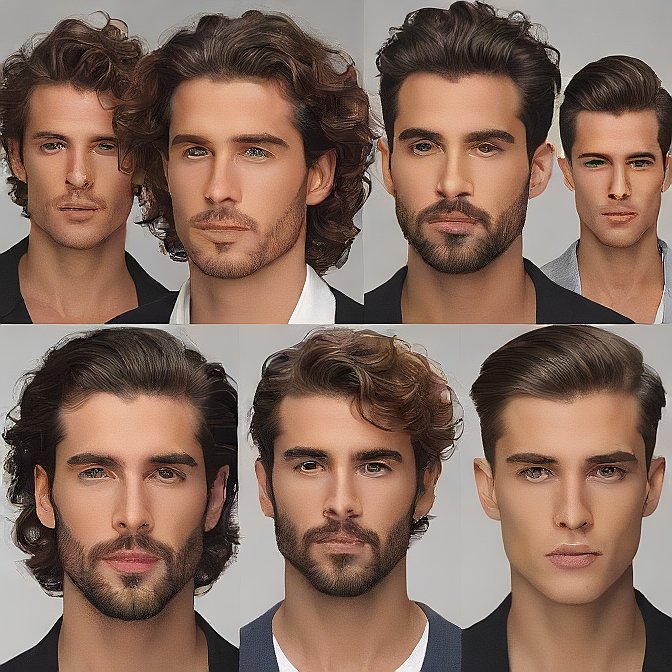
The various types of hair can most generally be categorized into four broad groups:
- Straight (Type 1)
- Super straight and no visible curls or waves.
- It is even shinier since natural oils themselves diffuse up to the end.
- It can look flat, not layered, or without volume.
- Wavy (Type 2)
- Softly curves or loosely makes an S.
- It is between straight and curly hair.
- Easy to become frizzy or puffy.
- Curly (Type 3)
- Clear ringlets or curly curls.
- They tend to become dry and shrink easily.
- Needs to be shaped according to particular needs, to make it avoid bulk and keep the bounce.
- Coily/Kinky (Type 4)
- Snake-like or stiff curls.
- Very fine and in many cases dry because of the inability of oils to spread.
- Dramatically diminishes and needs careful trimming in order to restore natural volume and form.
Don’t Forget Hair Density and Porosity
Density and porosity are two more important things to be comprehended:
Hair Density: It means the amount of hair on your head, but this does not mean the thickness of the hair, but rather how closely the strands of hair are held together on the scalp.
- Low density: The scalp shows in some areas. Textures must be light and airy.
- Dense: dense-appearing hair. This could use some layering to prevent the bulkiness.
Hair Porosity: Hair porosity will inform you of the ability of your hair to receive and hold moisture.
- Hair that has low porosity: The hair is moistened by the water on its surface. Demands light clothes and less layering.
- Many pores: The hair also dries fast, although it may feel dry. Easier to frizz- gains extra control of texture.
Knowing your hair type, texture, density, and porosity now means that you are not selecting a textured haircut to fight against the hair that grows naturally out of your head. When you have this down, you will feel more tailored and look better in whatever cuts you are given.
2. Talk Texture with Your Stylist: Communication is Key
Unless you have discerned your hair type, texture, and whether your hair is curly, wavy, or kinky, the key element of a good textured haircut is that you and your stylist are on the same page. This is because one cut may be the wrong cut, wrong for your hair, wrong for your lifestyle, and wrong for your vision.
Use the Right Terms: Speak Your Stylist’s Language
Texturing techniques are described by using certain words. Familiar with a few of such terms, you will be able to articulate exactly what you desire:
- Layers: Having to cut hair in varying lengths behind to give volume, shape, and movement. Perfect to take pounds out or put muscle in.
- Choppy Ends: Choppy edges that loosely flow with a jagged finish, they are deliberate and give it that casual lived-in appearance typical of popular fashions.
- Razor Cut: A Tool utilized to get rid of volume and give soft and feathered ends-suitable with medium to thick hair.
- Point cutting: It involves the stylist cutting the ends at an angle and creating extra texture.
- Thinning/Slithering: Eliminates thickness on thick/coarse hair with special shears, and no shortening occurs.
Note: Do not tell me that you would like a textured haircut. Be particular about the look and feel, as well as the maintenance level you desire
3. Match the Cut with Your Face Shape for Maximum Impact
The appropriate textured haircut cannot be selected on the basis of your hair type only, but based on the face shape as well. A perfect cut can emphasize the best features in you, and a bad one will make your face appear wider, longer, or imbalanced. Better-fitting haircuts enhance balance, gentleness, and influence on the physical appearance.
Quick Guide to Common Face Shapes
- Oval
- Features: Proportional features, a little wide cheek, soft jaw.
- Positive side: This shape fits most of the styles! It is regarded as the most versatile one.
- Round
- Features: The same in width and length, soft cheeks, and curved chin.
- Objective: Alteration of heights and angles to make the face thinner.
- Square
- Features: dominant jaw line, wide forehead, square jaw, or flat chin.
- Objective: Round off the angular lines and bring motion to the face area.
- Heart
- Features: Broad forehead, narrow jaw, sharp chin.
- Objective: Neutralize features of the facial extreme.
Best Textured Haircut Styles for Each Face Shape
Oval Face
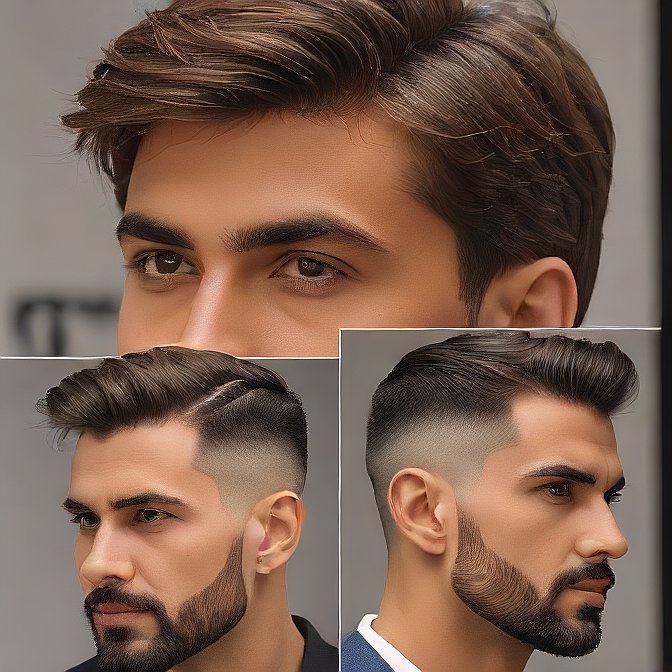
- What doesn’t work: Hardly anything.
Long layers, soft waves, blunt bobs, and shag cuts all lay flat to this shape.
- Hack it textured: Request face-framing strands or curtain bangs to give shape to your face, yet it does not overpower your features.
Round Face
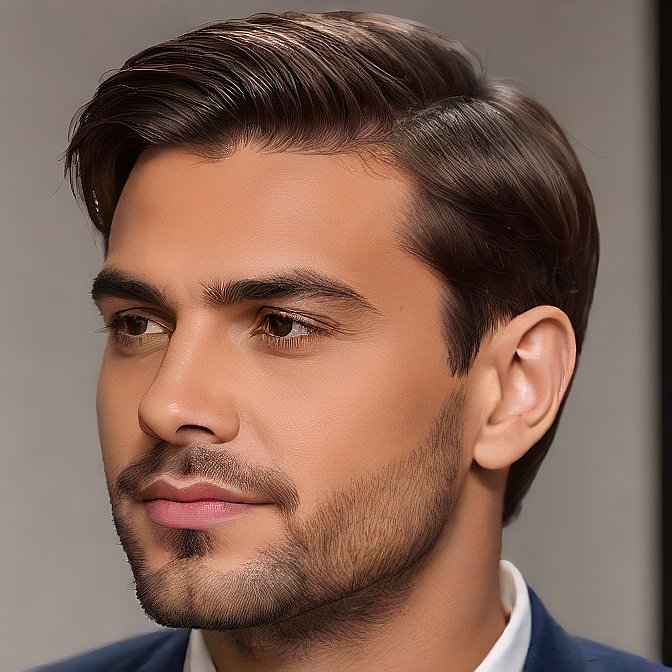
- What works: Side-swept bangs, long-edged layers, uneven bobs.
Such incisions give the impression of length and decrease roundness.
- Textured hack: Build volume on the top, rather than the sides, and extend the face.
Square Face
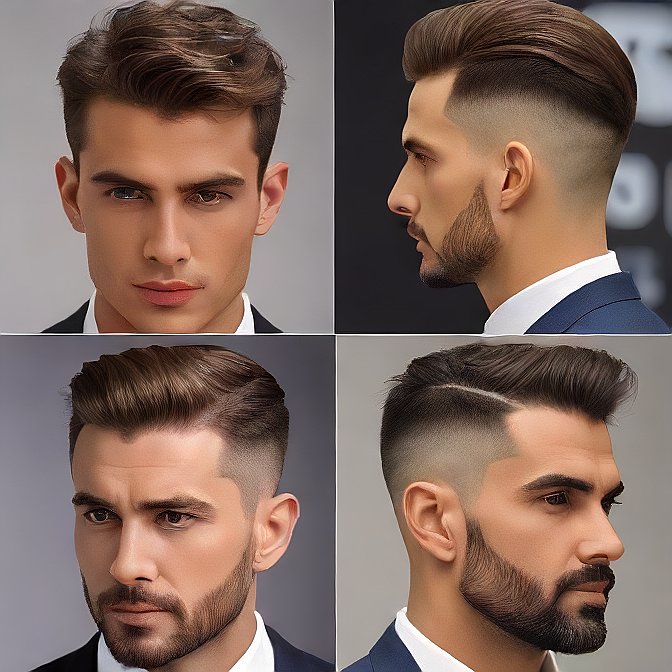
- What looks good: Wispy Bangs, curls that are soft and layered locks, in the form of long bob (lobs), and shaggy texture.
These hairdos cushion the heavy jawline and make it dynamic.
- Textured hack: Then, to keep it light and flowy, use the ends that are razored, or the hair feathered, to keep the cut light and flowy.
Heart Face
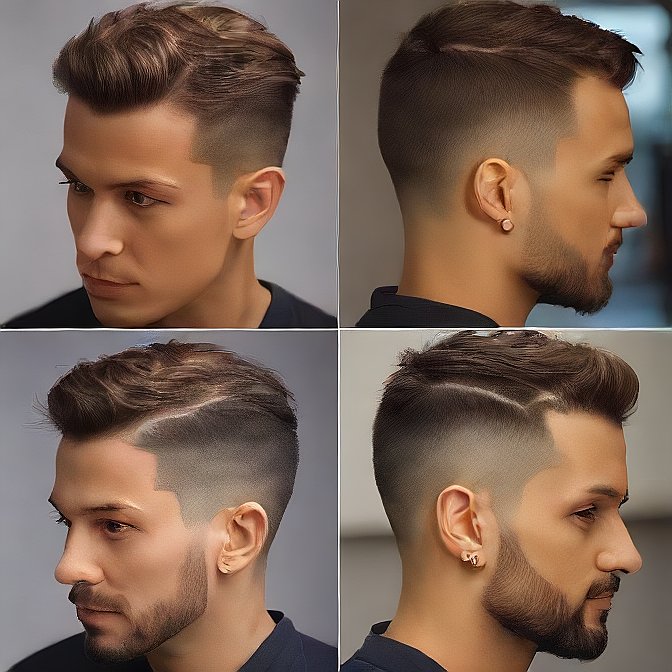
- What looks good: bob to the chin, side parts, curtain bangs, long waves.
These aid in compensating for the broad forehead and thin chin.
- Textured hack: Top layers across the chin and downwards make the bottom half of the face full.
4. Add Layers Like a Pro: Volume Without the Frizz
Just as much as layering is one of the biggest secrets behind a flattering textured haircut, it is not just any layering. The good type of layers can give your hair volume, shape, and movement because they do not cause frizziness or make the hair hard to control. However, when improperly used, layers will either make your style heavy or bulky in unexpected areas.
Why Layers Matter in a Textured Haircut
- In thick/heavy hair layers, cut weight.
- They make dull or lifeless hair move.
- Textures such as waves and curls are increased through layers.
- Good layering enables the haircut to grow out with grace for a specific period.
Best Layering Techniques for Each Hair Type
Straight Hair
- What works: Dark layers, piece-y ends, or something that lies around the face.
- Why: Gives hair some movement, avoiding it to be looking flat.
- Hint: Request point-cut layers rather than blunt layers to prevent sharp lines.
Wavy Hair
- What works: The layers falling are soft, beginning below cheek cheekbones or jawline.
- Why: Ultra warps up your waves and takes away the unwanted puffiness.
- Hint: Do not begin the layers too high, otherwise the waves will flip up in weird directions.
Curly Hair
- What works: Curls that have a round, curving shape of a series of layers.
- Why: Prevents the unfortunate looking (flat on top, bulky on the bottom) triangle shape.
- Hint: Make sure to add layers to dry hair- your stylist will be able to observe how your curls fall.
When Too Many Layers Are a Bad Idea
The more the layers, the better is not always true. Excessive layering of the skin may lead to:
- Frizz: This is especially with wavy or curly hair.
- Inevitable growth: It is difficult to keep or cut.
- Loss of structure: The hair can be thin or shaped in a way that it lacks structure.
- Do daily styling headaches: prone to blow-outs.
Pro Tip:
Never get your stylist to cut without asking him/her to explain the layering strategy. The cut should be right, and the one done by a good stylist will not depend on the way your hair acts; that person will take into account how it is going to eventually be once it outgrows.
Sculpting hair is called layering, and when applied successfully, it makes the difference between a simple cut and a cool textured piece of work.
5. Choose the Right Tools: From Shears to Styling Products
And a fabulous textured haircut does not end in the salon; it keeps going at home, and that is achieved through the use of the right tools and styling aids. The best cut might be low on its shape and volume within a short time, especially when you are not using the right equipment or haircare routine.
Essential Styling Tools for Home
There should be no salon setup, only a few smart tools applicable to your hair type:
- Round Brush (Straight / Wavy)
Excellent to blow-dry with volume and make hair bend softly.
- Flat iron or Curl wand
Useful in reshaping or conditioning a texture between shampoos. Just make sure not to abuse it too much, as excess heat might destroy the natural pattern of your hair.
Must-Have Styling Products by Hair Type
Your textured haircut might be fixed and improved with the help of the proper products:
Straight Hair
- Root mousse
- Ingredient: Sea salt – spray to give the hair a tousled look
- Day two sprayed volume
Wavy Hair
- Define bends: cream curl or wave enhancer
- Smooth ends serum, Anti-frizz serum
- Beachy texturing spray
Curly Hair
- Leave in-soft curling as well as a moisture conditioner
- Using styling cream or gel to maintain the curls
- Diffuser safe heat-protecting spray
Coily/Kinky Hair
- Hydration by using shea butter or an oil-based moisturiser
- Definition: creams that allow twisting out, Twist-out creams
- Neat hairlines edge control
Pro Tip:
You might get a great cut, but how you style and keep it in good shape, street by street, is the difference. Save up with products and instruments that treat your hair as it wants to be, and you will adore your haircut longer.
6. Embrace the Trial-and-Error Process: Confidence is Key
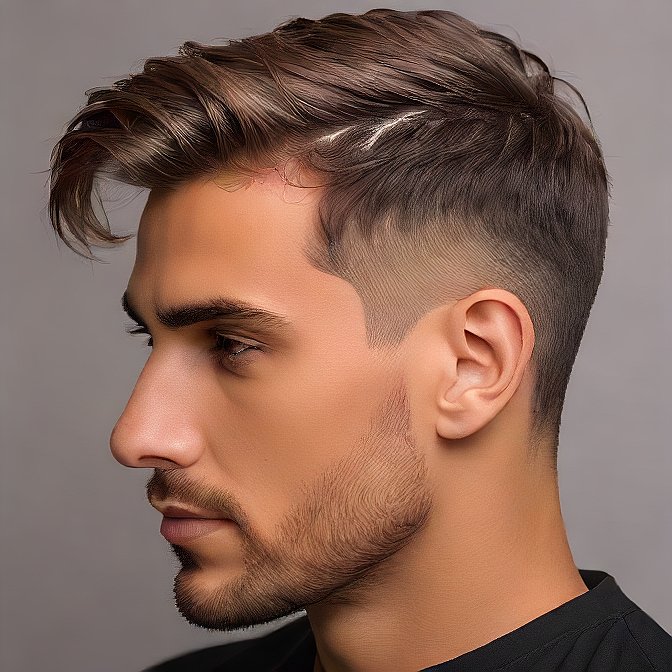
Getting your ultimate textured haircut may not always be a one-day deal, and that is fine. Hair is a special thing: it is personal and, as we know, most good things require a little experimentation. What ingredient is of the greatest value? Confidence.
There’s No One-Size-Fits-All Haircut
Despite all the right hints and even knowing your face shape and hair type, as well as possessing the best devices, your first-ever textured cut may not really turn out to be just as imagined. It does not, however, make it wrong. It implies that you are figuring out what suits your hair most.
Here is what you can learn with the help of trial-and-error:
- In what lengths and layers is your texture best suited
- The way your hair reacts to the weather, or seasonOne of the ways that this can come out is how the hair reacts to weather or season.
- What are good products to style hair and hold it?
- What maintenance will suit your lifestyle? How much can you maintain?
Conclusion:
It is completely possible that a single textured haircut selection completely transforms the appearance and feel of your hair. Being aware of your hair type, the shape of your face, and its styling, half of the job is already done.
Tweaking and experimenting, it does not hurt to experiment, is what you should not be afraid of doing. Your hair can be your best part with the proper trim and a little bit of self–will.
For more info: Click Here.
FAQs:
1. What is a textured haircut exactly?
The textured haircut is a style in which layers, cutting methods, or even cutting tools are applied to create movement, shape, and volume. It makes your hair appear more voluminous and stylized without much effort.
2. Is a textured haircut good for all hair types?
Yes! Regardless of the natural texture of the hair, which could be straight, wavy, curly, or coily, a textured haircut can be personalized to highlight its natural beauty. The trick is to find a proper layering and the technique that would suit your particular type of hair..
3. How often should I maintain a textured haircut?
To maintain the shape and layers, you should have a trim 6-10 weeks apart. You do not need to have split ends because, simply by having weekly maintenance, your style becomes easily controlled.
